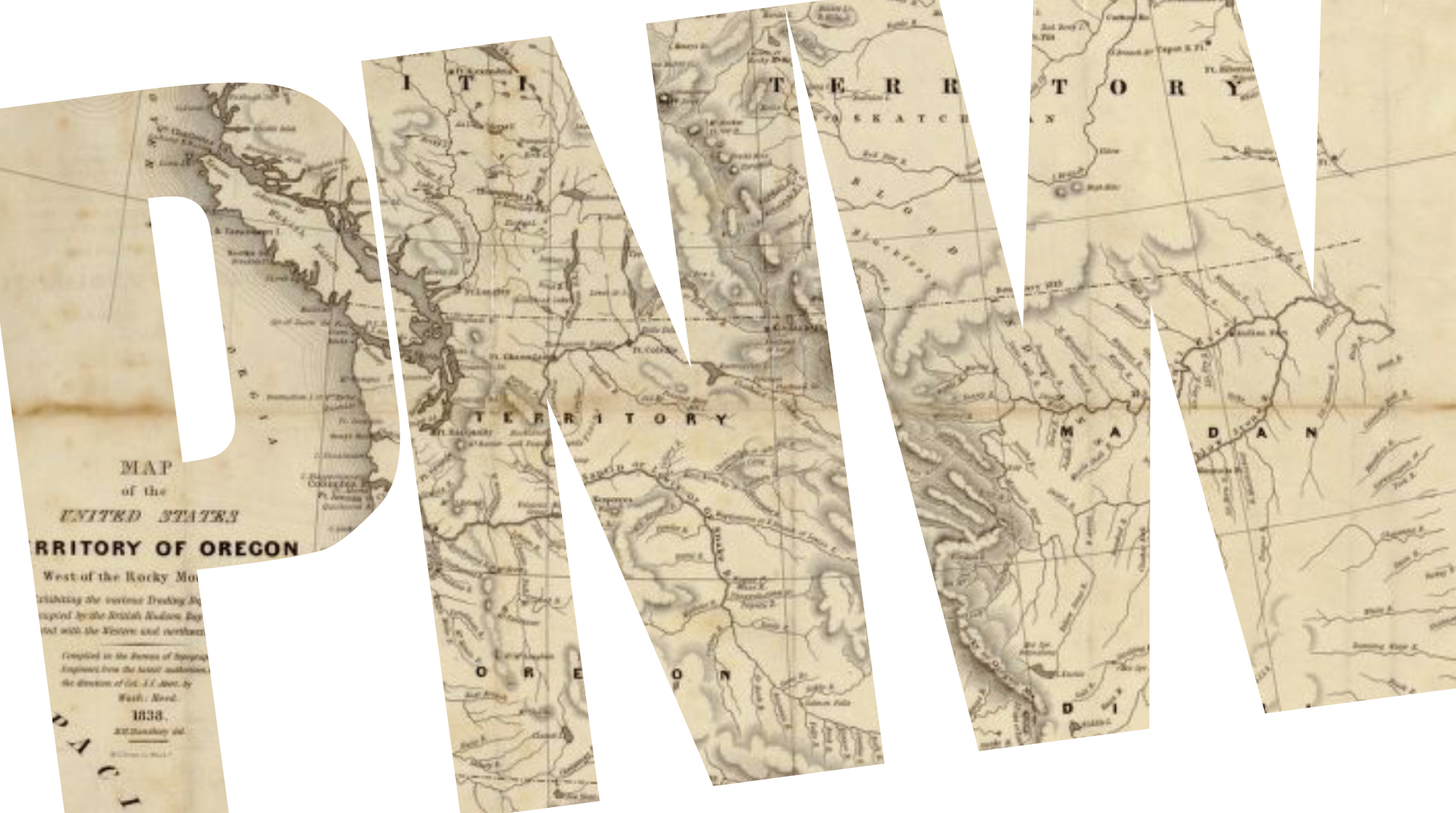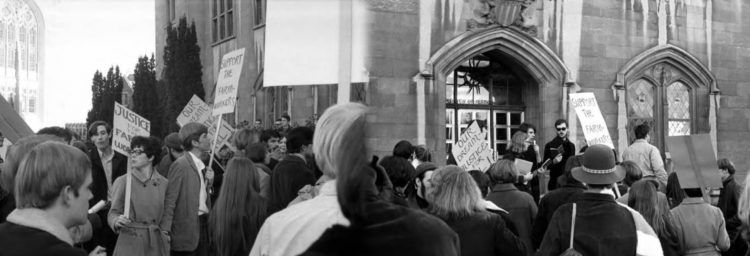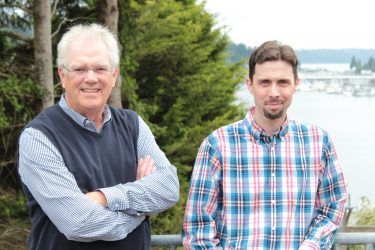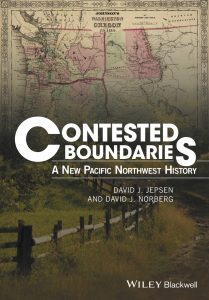

In the late 1960s, a battle raged over grapes on the University of Washington campus. Students living in the UW dorms had voted in favor of a boycott to support California farmworkers, who were in the third year of a bitter strike over their right to unionize. The University refused, resisting heavy pressure from a budding student group, the United Mexican American Students.
Unwilling to accept “no” for an answer, the student group led a boycott of the UW’s five restaurants and all of its sandwich and snack machines. More than 100 students began to picket outside the HUB. At night, they made hundreds of peanut butter sandwiches and other snacks and passed them out to “hungry students” who honored the picket line.

Protesters hold signs and give speeches during a grape boycott on the UW campus in 1969. Source: UW Special Collections (UWC2543, UWC2542)
The Chicano-led boycott, supported by groups like the Black Student Union, convinced administrators to stop selling grapes at the UW, making it the first college campus in the nation to stand with the striking California farmworkers.
It’s the kind of story you won’t find in many history textbooks. To Northwest historians and UW alumni David Jepsen and Dave Norberg, that’s precisely the point.
Their collaboration produced “Contested Boundaries,” the first new Pacific Northwest history textbook published in nearly three decades. The book is brimming with tales like that of the grape boycott—colorful stories that illustrate the central theme of conflict over boundaries, both the ones you’d find on a map, and the societal ones that people build to exclude those who are different from themselves.
***
What do we include as part of the Pacific Northwest? What characterizes the region’s culture? And whose land is it anyway?
The answers have changed over time. At times, African Americans were barred from settling in Oregon. Women were restricted from working long hours, for fear of jeopardizing their ability to procreate. Catholics, Native peoples, Asian Americans and just about anyone who wasn’t a white, male Protestant faced exclusionary laws or cultural barriers. Even white men could run into conflict in the early 20th century if their union activities led them too far left of center.
When armed militants occupy a federal wildlife refuge in Oregon, or when Washington legislators debate who should have access to public restrooms, Jepsen hears echoes from our past.
“The names have changed, the colors have changed,” he says. “Now it’s transgender people, or it’s Muslims.”
To Jepsen, it’s a familiar struggle. The arguments are shades of those that have simmered since the founding of the republic over what it means to be an American.
“The history of this country is about expanding that definition to include people from all walks of life, all ethnicities, all religions, all colors,” Jepsen says.
***
Jepsen majored in communications at the UW, graduating in 1977. A short stint in journalism followed, then a long, successful career in marketing in the financial services industry. But as he approached age 50, he felt drawn to a new path. He asked himself, “Do I really want to be writing mutual fund literature when I’m 70?”
So, he turned to something that did. He always loved history, but wasn’t satisfied with being a history buff anymore. He returned to the UW in 2000 to pursue his master’s degree, with the goal of doing what he is doing now at age 70: teaching and writing about history.
“There’s a perception that somehow history is irrelevant and won’t help you get a job. We just cry foul at that. History teaches people to think, it teaches them to understand others. It teaches skills that can be used in any walk of life.”
David Jepsen
In Norberg, he found a collaborator who shared his approach to teaching and writing. Norberg, 44, earned his bachelor’s degree in history at the UW in 1997 and his master’s at Western Washington University in 2001.
As scholars, they both see themes of conflict and exclusion that define Northwest history. As educators, they have the same goal: inspiring an interest in history that will pay dividends throughout their students’ lives.

David Jepsen and Dave Norberg
Many students sign up for classes mainly to fulfill a requirement. Some might question why they need to take a history class when the world seems to be demanding more coders and fewer historians.
“That’s the battle we face,” says Jepsen, who teaches at Tacoma Community College. “There’s a perception that somehow history is irrelevant and won’t help you get a job. We just cry foul at that. History teaches people to think, it teaches them to understand others. It teaches important skills that can be used in any walk of life.”
***
Few people would spend their leisure time reading a textbook, and far fewer would take on the less-than-glamourous job of writing one. Perhaps that’s why no one had produced an authoritative source on Northwest history since Carlos Schwantes published “The Pacific Northwest” in 1989 (it was updated it in 1996). While it served students for many years, Schwantes’ text had become dated, with its version of Northwest history ending in the 1980s, before most of Jepsen and Norberg’s students were born.

“Increasingly I talk to my students and they’re like, ‘The 1980s were a really long time ago,’” Norberg says.
He needed a tool to help him get through to students who grew up in the age of the internet and the shadow of 9/11. Those students wanted to hear how events from the 21st century fit into the larger historical picture, and Norberg and Jepsen wanted to find a better way to engage them. So they set out to write a textbook, without writing a textbook.
“Students will sometimes come in with a traditional textbook, and almost kind of panicking, they’ll say, ‘What do I have to remember? We have this catalog of details—do I have to memorize all of this?’ That’s not the point,” Norberg says.
Instead, Norberg and Jepsen decided to tell stories and entertain students as well as inform them. Their book would include the story of the Everett Massacre of 1916, the building of the Grand Coulee Dam in the 1930s, and the standoff at Oregon’s Malheur National Wildlife Refuge in 2016.
There’s a good chance that students who read “Contested Boundaries” won’t be able to remember the name of Washington’s first governor, but they might walk away knowing why history matters.
“I think that’s everything,” Norberg says. “Forget all the details. If we can get them hooked on it, four, five, 10 years from now, we’ll have done some good.”